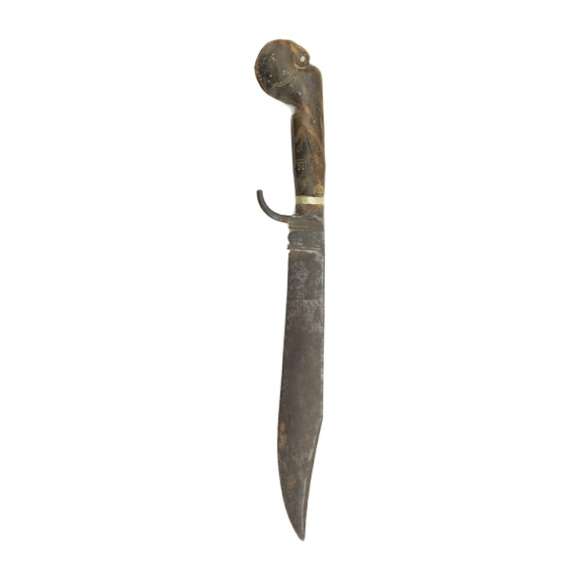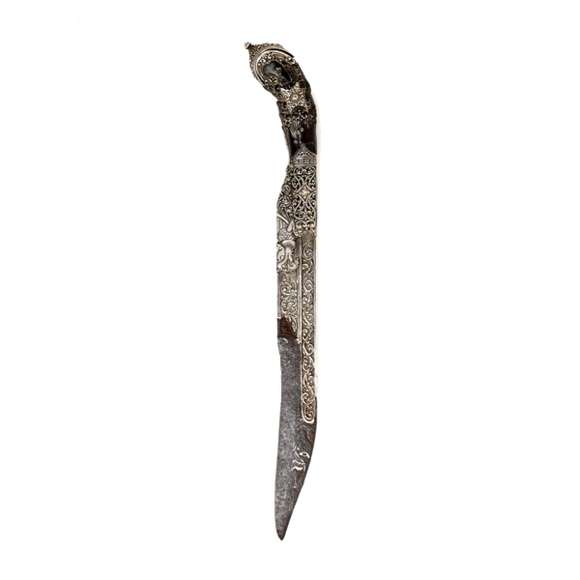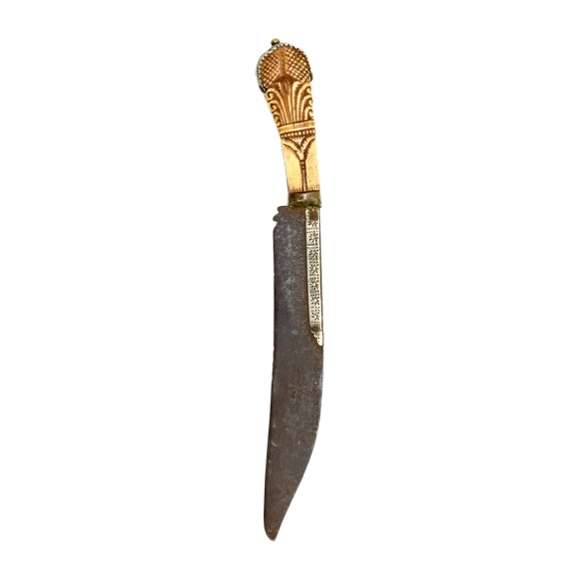Language: Sinhala
Description
The kasthāné (often called simply kastane), is the sword of Sri Lanka and more specifically that of the Kingdom of Khandy.
In colonial times, the island was known as Ceylon.1 The Low Countries, situated in the west of the island, fell under the control of colonist invaders in the early 17th century. The Kingdom of Kandy was situated in the highlands of the central and western part of the island. Here, Sinhalese culture survived relatively undisturbed for two more centuries until their capital, Kandy, was finally overrun by the British in 1815.
There are three main types of kasthāné found among antiques:
1. The kasthāné of Kandy that were made in the royal workshops of the King, who bestowed them upon noblemen and local chieftains as symbols of rank and office, or as gifts to diplomats. These typically have a highly ornamental hilt of gold or silver, sometimes ivory or horn. Gold was reserved for the king himself and silver for his highest officials, Adigar, who were basically feudal lords that also acted as ministers and governors. The blades varied from short to long, light to heavy, but all tend to have blades that are at least somewhat functional.
2. Pure fighting pieces, often quite heavy, following the same general style as the first class but with more rudimentary decoration.
3. The kasthāné of the Low Countries. These were made under foreign control to be bestowed on local puppet leaders. They tend to be short, light and purely ceremonial. Although the mounts are often technically well-made, they are out of proportion, look somewhat clumsy and lack the aesthetic appeal of the swords made in the Kingdom of Kandy. 2 After Kandy fell to the British in 1815, only this type remained in production. The blades on these tend to be purely ceremonial.
Notes
1. Stone, George C., A Glossary of the Construction, Decoration and Use of Arms and Armor: in All Countries and in All Times. (Reprint) Dover Publications, 1999. Page 339.
2. De Silva, P.H.D.H & S. Wickramasinghe, Ancient Swords, Daggers & Knives in Sri Lankan Museums, Sri Lanka National Museums, 2006. See pages 145-175 for a variety of kasthāné from the Kingdom of Kandy and the Low Countries.

Two silver mounted kasthané
Left: Rijksmuseum Accession number NG-NM-7112. Taken at Khandy in 1765.
Right: A kasthāné sold by Mandarin Mansion in 2017.
In period sources
"When he first promotes them [the Adigar] (…) he (...) gives them a sword, the hilt all carved and inlaid with silver and brass very handsomely, the scabbard also covered with silver - a knife, and halberd; and lastly, a town or towns for their maintenance." 1
-Robert Knox, 1681
"All the men in office wear swords of a moderate size, antiquated and not formidable in appearance. The hilt and scabbard are made of silver. The former imitates the head of a tiger, the latter is embossed and turned round at the point." 2
-James Cordiner, 1807
Notes
1. Robert Knox; An historical relation of the island Ceylon, in the East Indies. Printed by R. Chiswell. 1681. Page 53.
2. James Cordiner; A Description of Ceylon, Longman, Hurst, Rees , and Orme, 1807. Vol. 1 page 97.






